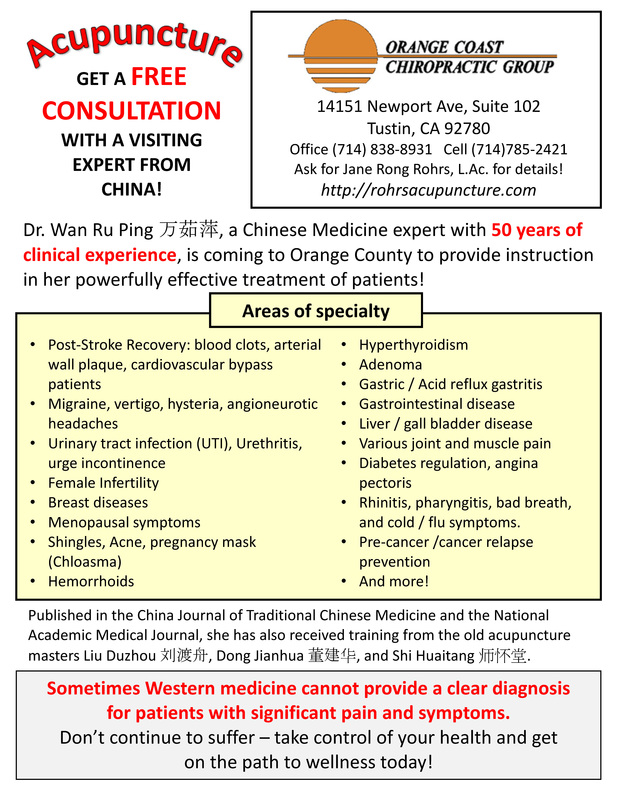|
We officially welcome Dr. Wan Ru Ping to the clinic today. With 50 years of clinical experience and highly esteemed by her peers, Dr. Wan will be with us until mid-May. For a sampling of her clinical specialties, see below: Download a pdf of the flyer here.
0 Comments
Every time when people mention about needles, it's like a nightmare from childhood memory - scary, huge, sharp, cry, pain, all of the negative things that make you run away from any topic about needles. But the truth is, not all needles are created equal. Actually, there's some interesting things that set acupuncture needles apart from all the others.
Ever been to the doctor's office to get a shot? Those hypodermic needles have hollow points. Like to sew? Those needles have cutting edges. Ever been trapped on the death star? Don't worry. When you go to the acupuncturist, you won't be locked in a room with Darth Vader and a floating ball droid. Acupuncture needles are very thin, solid and made from stainless steel. The point is solid and smooth, and insertion through the skin is not as painful as injections or blood sampling. The risk of bruising and skin irritation is less than when getting your flu shot. Plus, acupuncturists use sterile, disposable needles, so there's no risk of infection from treatments. Most people experience minimal pain, if at all, as the needles are inserted. Once the needles are in place, there can be a pressure or tingling feeling. This feeling can be adjusted, though generally a stronger sensation will improve the patient’s condition quicker. Acupuncture can be very relaxing; some patients even fall asleep during treatment. Can't get over the needles? Talk to your acupuncturist. Give it a try and you'll wonder what the big fuss was all about. As I start this SoCal career, it's interesting what kind of misconceptions people have about acupuncture: both what it is, and what it isn't. So let's talk about what acupuncture is. Acupuncture activates the body’s natural healing process to combat illness and disease. Hair-thin needles are inserted at specific points on the body, sometimes with the application of heat or low-intensity electricity.
Acupuncture theory states that 12 channels of energy, called meridians, run in regular patterns through the body and over its surface. If the movement of energy is blocked, it creates a “traffic jam” that properly inserted acupuncture needles are able to unblock. Each channel/meridian is a group of points up and down the body, and their names are based on the main organ they’re associated with: heart, liver, spleen, stomach, etc. So if you have a problem with your liver, an acupuncturist would treat the liver meridian to help that organ. So knowledge of meridians, their locations, their points and how they influence each other are a big part of acupuncture training. Once this knowledge is mastered, however, it paves the way to patients' pain relief! Hello Everyone,
Welcome to the Rohrs Acupuncture Blog! Check back often for information about acupuncture and acupuncture-related topics. Looking forward to seeing you on future posts! |
Jane Rong Rohrs, L.Ac.
Using knowledge of the ages to treat patients in the present. Archives
November 2021
Categories |
Proudly powered by Weebly

 RSS Feed
RSS Feed